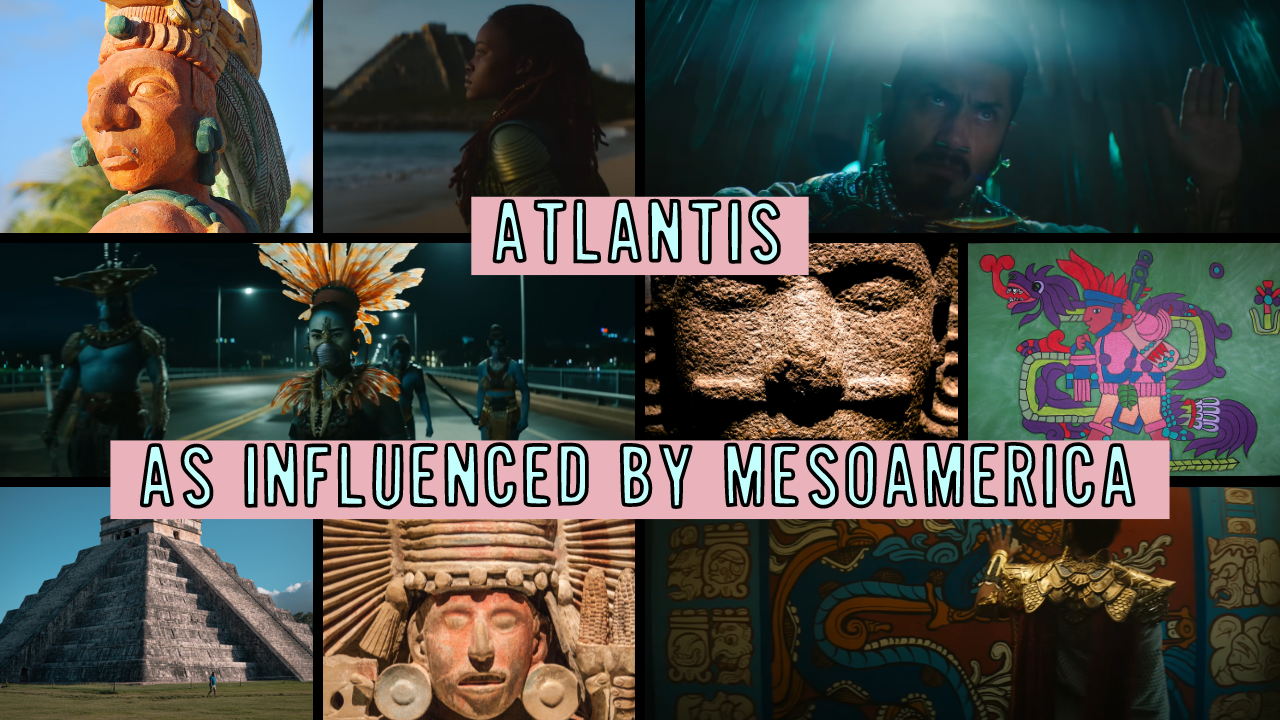In the trailer for Black Panther: Wakanda Forever, Mesoamerica has arrived by way of Atlantis.
The trailer has graced us with a spectacular trailer full of emotion and depth. It also introduced us to a new civilization, Atlantis, based around Mesoamerican cultures. Its leader, Namor the Sub-Mariner (Tenoch Huerta), leads his people, who seemingly practice customs and cultures similar to those of the Maya and the Aztec.
The society shown in the film, which we know of as “Atlantis” in the comics, is now called Talocan, inspired by the name Tlālōcān. As DisInsider writes, the name is Aztec and means “Place of Tlālōc,” and is described as “a paradise for those who died through drowning or lightning.” Tlālōcān is also thought to be ruled by Tlālōc, much like how the panther goddess Bast rules over Wakanda.
Who were the Maya and the Aztec and what can Black Panther: Wakanda Forever teach us about these powerful nations in world history? Let’s dive into a fun history lesson.
Who were the Maya and Aztec?
The Maya and Aztec were Mesoamerican civilizations whose reigns either ended mysteriously or were devastated by Spanish conquest and colonization. The Mayan Empire took residence in Guatemala and, according to History, “reached the peak of its power and influence around the sixth century A.D.”
“The Maya excelled at agriculture, pottery, writing, calendars and mathematics, and left behind an astonishing amount of impressive architecture and symbolic artwork,” History states. “Most of the great stone cities of the Maya were abandoned by A.D. 900 however, and since the 19th century scholars have debated what might have caused this dramatic decline.”
The Mayan Empire was one of the dominating forces in pre-colonized world of Mesoamerica. The civilization spread from the Yucatan Peninsula to modern-day Guatemala, Belize, Tabasco and Chiapas in Mexico, and the western areas of El Salvador and Honduras. In a parallel to Talocan and Wakanda–two civilizations who were untouchable to outside influences–the Maya civilization was extremely hard, if not impossible, for other forces to conquer. The geographical area it covered made it “relatively secure from invasion by other Mesoamerican peoples.”
And the geographical area was just large; it was ecologically and geographically diverse. The Maya civilization included the northern lowlands on the Yucatan Peninsula, the southern lowlands in northern Guatemala and parts of Mexico, Belize and western Honduras, and southern highlands in the southern Guatemalan mountains.
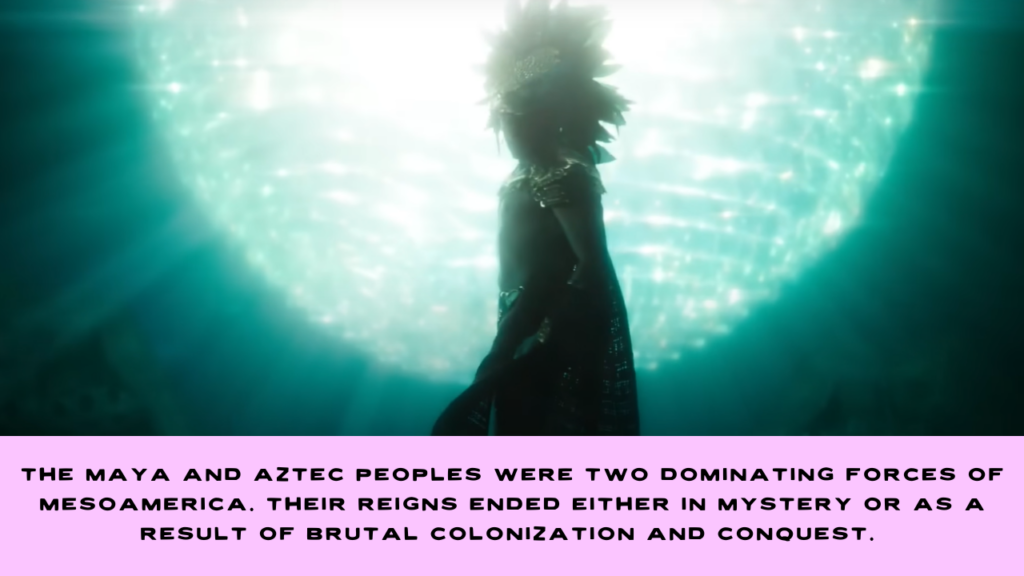
The Aztecs, on the other hand, are believed to be descendants of nomadic hunter-gatherers who made their way from northern Mexico to Mesoamerica in the 13th century, after the demise of the Toltec civilization. According to History, the Aztecs are considered “Mesoamerica’s last great native civilization,” turning a swampland into the basis for a sprawling empire, complete with floating islands for farming as well as an intricate society that prided itself on its military might. The might of the Aztecs was cemented through the Triple Alliance, created by the then-king (or tlàtoani, meaning “mouthpiece” or “speaker”) of Tenochtitlán, Itzoatl. Through political machinations, Itzoatl was able to create relative stability between rivaling city-states Tlacopan and Texcoco.
The Aztecs were known as the Tenochca, which is where the name for the Aztecs’ capital city, Tenochtitlán, came from. They were also known as the Mexica, a name that eventually became what the city built after Tenochtitlán would be called. And as you can guess, this is where the name for “Mexico” comes from. It’s worth noting that the actor behind Namor has the first name “Tenoch” and is, indeed, of Aztec and Purépecha roots.
What was life like in the Mayan and Aztec civilizations?
Both Aztec and Maya peoples–as well as other civilizations like the Totonac, Teotihuacán, and Zapotec–derived many of their cultural and religious aspects from the Olmecs, the first major civilization in the Mesoamerican region. Like with the Olmecs and other Mesoamerican cultures, pyramids were built as part of a city structure and stone monuments were inscribed, marking important moments in Aztec and Maya culture.
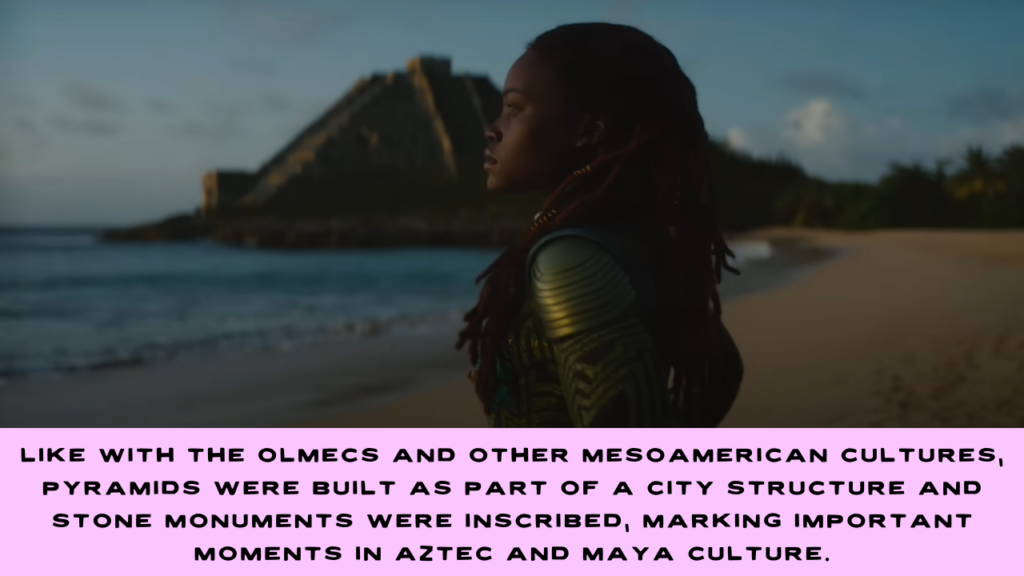
The Classic Maya period, which began in A.D. 250 and ended in A.D. 900, saw the Maya population presumably reach to as many as 10,000,000 citizens. The cities of the Classic Period were also plentiful, reaching as many as 40 cities within the empire, with each city built around a ceremonial center, according to the Canadian Museum of History . So much of our everyday life has been influenced by the Maya, including advancements in astronomy, the Calendar Round (based on 365 days, like our calendars) and the Long Count Calendar, which spans 5,000 years.
The Maya also made significant advancements in mathematics, art, language (over 70 languages, which are still spoken by five million modern-day Mexicans and Central Americans today!), writing (such as creating books from paper made with tree bark, much like our modern paper and developing the most sophisticated writing system in the pre-Columbian period), and creating uses with materials such as chocolate and rubber.
Maya practiced “slash-and-burn” agriculture and other technologically advanced farming techniques for the age, including terracing and irrigation. These techniques were performed by the bulk of the civilization, the farmers.
The Canadian Museum of History writes that the Maya populace lived in thatched-roof houses with walls made of interwoven wooden poles and mud. These homes were more like sleeping residences–most of the housework, as it were, happened outside in communal areas. We see something similar to these communal areas in the form of the small Atlantean market in the trailer.
Men and women had different tasks to complete during the day–the men traditionally built the homes and tended to the cornfields, while the women prepared food for the family and completed other domestic tasks, including make clothing. Incredibly, many of the farming techniques that were used during the Maya civilization are still in practice today.
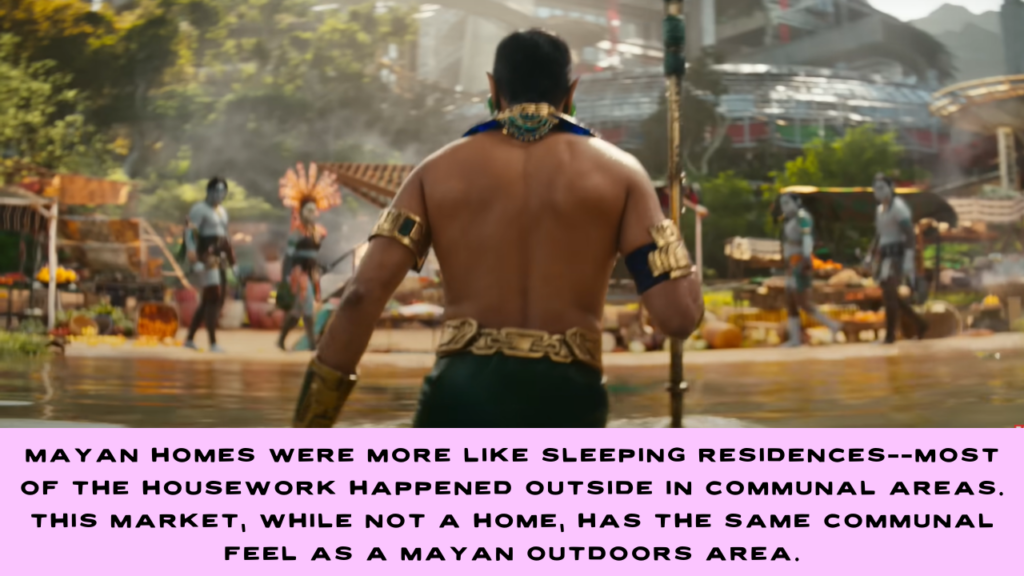
However, the farming communities moved away from the small villages led by officials to the Classic Period’s sizeable kingdoms, with more complex jobs created for people to collect rainwater, make more land suitable for farming, create and maintain water systems, including canals, reservoirs and cisterns, cornfield maintenance and more. Trade also increased as food production increased. And, according to History, excavations have shown that the Maya enjoyed palaces, courts for the famous ball game ulama, religious temples, and plazas. The expanded city-state, including major metropolises like Chichen Itza, led to the development of a king to lead.
The religious aspects of the culture were deeply engrained, with the gods of the sun, moon, corn and rain being worshipped by the populace. Like with most civilizations, the top of the empire included royalty, also known as “kuhul ajaw” (holy lords), who were believed to be related to gods and were mediators between the gods and the humans. The royalty was led by the king (aka the “ahau”). And, as with other dynasties, the royal line of succession followed a familial line with alliances made with other kingdoms through marriages.
Quetzal feathers, as referenced in the Black Panther: Wakanda Forever trailer, were worn by the Maya (as well as the Aztec), along with jade. These ornaments, including marine shells that were used as trumpets, were standard parts of war regalia and ceremonies, religious and otherwise.
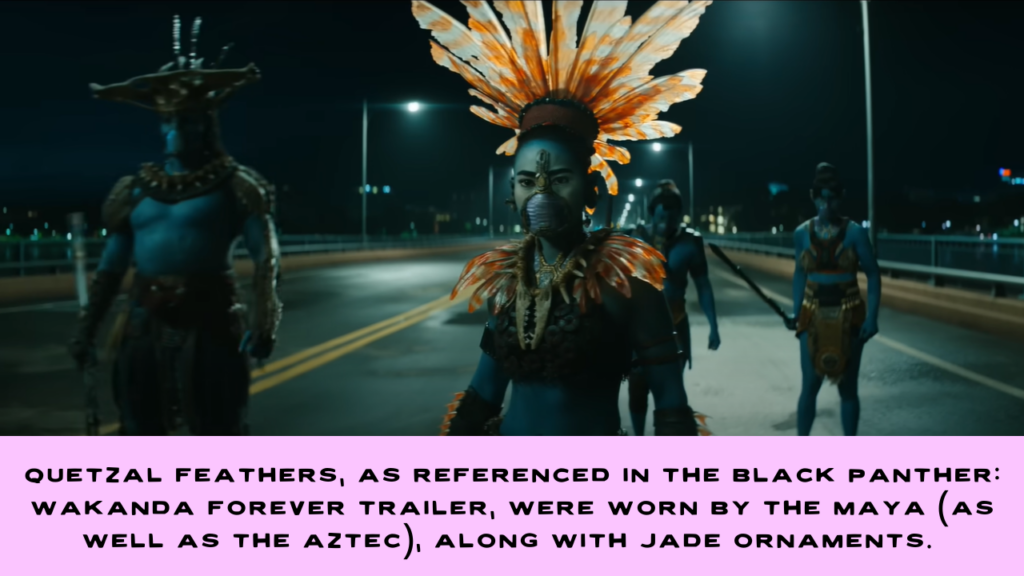
The Aztec, however, made their name on their war-like status. The Harvard Gazette writes that the Aztec were primarily “a culture based on war and agriculture,” meaning their two most important gods also dealt with those areas of concern. “Their two most important deities were Huitzilopochtli, the god of war, and Tlaloc, the god of rain,” according to the site. Quetzalcoatl, the feathered serpent god, was also important to the Aztecs (and as referenced by the Maya due to the Quetzal feathers; in Mayan theology, Quetzalcoatl was known as Kukulcán).
Daily life in the Aztec Empire included being used to the hustle and bustle of the city. It’s believed that 5 to 6 million people were a part of the Empire, with over 140,000 living within Tenochtitlán, making it the most populated Mesoamerican city in history. Commerce was a huge part of the Aztec economy, with 50,000 people visiting the markets. Perhaps the amount of people is what led to the Aztecs developing a caste system to organize its citizens.
The food the Aztecs ate has similarities to what was found and grown in other Mesoamerican civilizations. The crops farmers grew were plentiful; popular crops included corn, squash, potatoes, beans, avocados and tomatoes. The farms were supported by complex methods of irrigation and land cultivation, much like the Maya, and were grown on the artificial islands previously mentioned, called chinampas. Along with several types of vegetables, the Aztec diet also included meats like wild turkey, armadillos, rabbits, coyotes and snakes.
Religion was a huge part of Aztec society, as it was for the entire Mesoamerican region of civilizations, and like most Mesoamerican empires, the Aztec built pyramids like the Pyramid of the Sun, which was built in Teotihuacan. It, along with the city’s other pyramids like the Pyramid of the Moon, are among the largest on the American continent, according to National Geographic. The Aztecs also used complex calendar systems, including what we would consider a standard 365-day calendar and a 260-day ritual calendar.
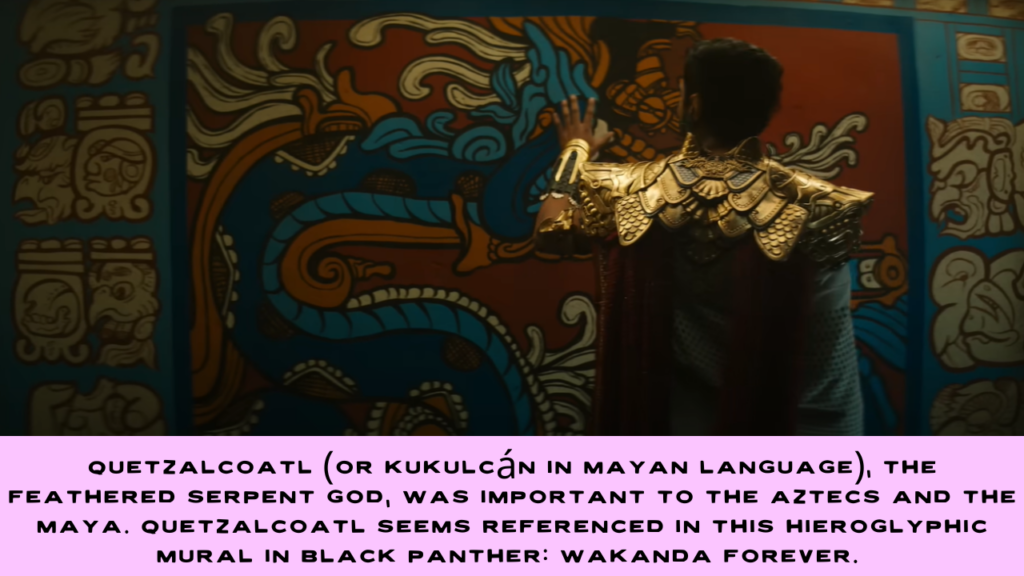
Like the Maya, the Aztecs took part in the ritual of human sacrifice. This is probably the most defining aspect of the Aztecs in the modern consciousness because of how often Spanish invaders and missionaries wrote about such practices as a way to condemn and provide an “excuse” as to why they should colonize already-existing civilizations.
If we strip away our own feelings about the morality of human sacrifice, we can learn more about how the Aztec religious system worked. Human sacrifice, along with personal bloodletting, was important to keep the gods appeased.
John Verano, who teaches anthropology at Tulane University, told History that sacrifices would happen throughout the year to mark important dates, temple dedications, and to end famine and drought.
The Aztecs believed that human sacrifice was paramount to help Huitzilopochtli win his war against eternal darkness. The belief was that the sun god was constantly in battle against darkness, and if darkness won, the world would end. To keep Huitzilopochtli doing his thing in the sky–rising and keeping the earth and its inhabitants warm and safe–the Aztecs must feed Huitzilopochtli with human offerings, such as blood and hearts. On a more practical note, human sacrifices kept other, potentially rival kingdoms at bay out of fear. The amount of sacrifices could intimidate other civilizations, increasing the might of the Aztecs in others’ minds. Indeed, most of the sacrifices at Templo Mayor weren’t of Aztec citizens, but of enemy soliders and the slaves from other kingdoms.
But just because there weren’t a lot of Aztec sacrifices at that site doesn’t mean Aztec citizens didn’t get sacrificed to the sun god. History writes that Aztecs chosen for sacrifice were honored to literally give their heart to Huitzilopochtli, as it meant that they would be granted blessings in the hereafter, such as the ability to fight alongside the sun god in his war against darkness.
What destroyed the Mayan and Aztec civilization? Where are their descendants?
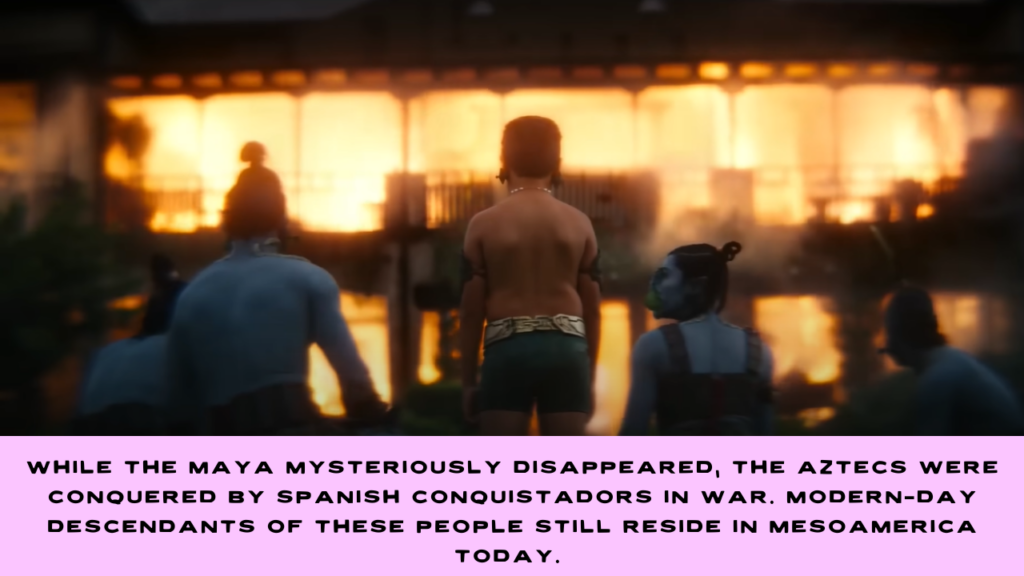
The ending of the Maya is still a mystery. According to History, some theorize that the Maya may have depleted their environment with a population that couldn’t be sustained by the geography and ecology. Perhaps ecological tragedy, such as a drought, could have also led to the civilization’s demise. Another theory is that war with other city-states ran the civilization into ruin. Alliances, including powerful marriage alliances, are also thought to have diluted the empire, and even a theory about human sacrifices leading to the civilization’s destruction has been floated. But nothing is known for certain. What is definite is that once Spanish conquistadors arrived in the 1500s, the remaining Maya resided in small villages.
The Aztecs faced an ending that echoed the very thing that gave them immense power in the region: war. Hernando Cortés came to Mexico in 1519 looking for gold. Upon receiving golden gifts from the current ruler, Motecuhzoma (aka Montezuma), Cortés tried to take him prisoner and rule the kingdom in his stead. But Cortés was forced to flee the kingdom in 1520. Unfortunately, the Spanish came back and attacked the Aztec capital of Tenochtitlán in May 1521. The Aztecs surrendered in August of that year.
The Spanish also had help from rivaling city-states, some of whom were a part of the Triple Alliance, such as Ixtlilxochitl II of Texcoco and allies from Tlaxcala. The major allies from neighboring kingdoms include Xicotencatl the Younger, Xicotencatl the Elder, Maxicatl, Xicomencoatl of Cempoala and Cosijopii I of Zacchilia.
Descendants of both the Maya and the Aztec, as well as other Mesoamerican civilizations, still exist today. The British Museum writes that the Nahuas, the Aztecs’ descendants, “continue to be the largest Indigenous group in Mexico.” The Maya, Mixtec and Hñahñu are just a few of the 60 Indigenous groups still living in Mexico. Today, their cultural beliefs are integrated into today’s time. For instance, according to Mexicolore, the Huichol retain their association with their pre-Christian gods, such as Father Sun, Grandmother Growth, the goddess of the Pacific Ocean and Grandfather Fire. Offerings are also made via “gourds lined with glass beads, and colourful pictures inspired by religious customs.”
Apart from residing in Mexico, many of the Mayan descendants live in Central America, including Honduras, Guatemala, El Salvador and Belize, with the majority living in Guatemala. History writes that about 40 percent of Guatemalans are of Mayan descent.
This is all cool, but what now?
Black Panther: Wakanda Forever is expanding on the Black Panther franchise’s ability to expose audiences to cultures and histories outside our own. Just as audiences learned about various African cultures in the first film, we will now be able to see a positive, inspiring representation of Mesoamerican history, led by an actual descendant of Mesoamerican people.
This is a wonderful time for you check out the links I’ve included, as this history is much more advanced and intricate than I’ve written here. But you can also use this moment as a catalyst to dive even deeper into Mesoamerica with these books on the subject. Within these books, you can learn more about the history, fashion, art, religious practices, conflicts, and more.
Maybe, you too can develop your own story about a Mesoamerican hero or heroine and take the world by storm. Or, you can become inspired by traditional farming practices and try them out in your own garden (thereby conserving wildlife and historical practices simultaneously). However you decide to incorporate your new knowledge is up to you. But regardless of what you do, will be able to go out into the world a little more aware of the history that probably resides within your Latinx friends, family, or coworkers.
We don’t have to be direct descendants of royalty to be treated with respect, but knowing more about the people around you will, in turn, make you much more aware and respectful of their humanity, and yours too.
